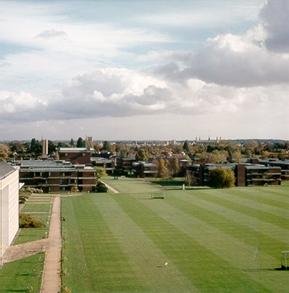![]() Smart MicroDevice
Group website!
Smart MicroDevice
Group website!
[photo-collection]
Colleges in Cambridge
No. 1. King’s College (國王學院)
King's is one of the oldest Cambridge colleges,
founded by Henry VI in 1441. It is Cambridge's premier tourist attraction, due
above all to its spectacular Perpendicular chapel.
劍橋大學气勢最宏偉壯觀的建筑,是國王學院的教堂。它聳入云霄的尖塔,早已成為大學和小城的地標。教堂從1446年開始興建,歷經四個朝代七十年才完工。國王學院的禮拜堂是劍橋的榮耀,也是公認的全歐洲最出色的哥特式建筑。教堂唱詩班吟唱的圣誕頌歌,傳遍世界各角落。




King's College Chapel is arguably the most magnificent
example of late medieval English architecture in the entire country. The chapel
was begun to build in 1446, but the Wars of the Roses intervened and when Henry
was deposed in 1461 it was only partly built. Work proceeded sporadically until
1508, when Henry VII granted funds, but the work was not complete until 1544.
It is the largest in the world covered with fan vaulting. The vaulting is
decorated with intricately carved bosses of wood and stone, featuring heraldic
beasts, coats of arms, and Tudor motifs.







No. 2. Trinity
College (三一學院)
Trinity College was founded by Henry VIII in 1546. It is one
of the richest and most prestigious of Cambridge colleges.



The Great Court in trinity college is the largest and most
impressive court of any at Cambridge and UK. The Great Court is entered through
an imposing brick gateway built in 1535, the largest of all the college gates. Above the entry
is an imposing statue of Henry VIII, holding a chair leg! It seems that one
naughty student removed the original sceptre held by the statue, and replaced
with a chair leg! No one care about that afterwards, My God!
國王學院的北邊,就是最富盛名的三一學院。學院最早是在1546年由英王亨利八世合并兩所學院建立的。這是早期出過牛頓、培根,近期出過怀海德、羅素、維根斯坦的殿堂。歷年來它培養出了三十位諾貝爾獎得主。劍橋大學總共出過七十八位諾貝爾獎得主,這個記錄在全球高校中也屬惊人。三一學院學生最津津樂道的一件趣聞,就是三一學院大門頂上亨利八世的雕像。曾經有一位調皮的學生,或許是酒后膽大包天,乘著夜晚竟然將國王右手中的權杖偷偷換上一把椅子的一腳。第二天學生們發現之后,原以為校長會大發雷霆嚴格查辦。沒想到校長卻認為劍橋大學的學生,見解行為与眾不同,雖然大膽放肆但是調皮可愛,沒有追究這件事。從此這反而成為劍橋流傳千古的美談。



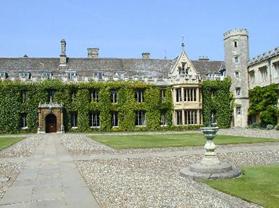
The apple tree outside the college gate
is a direct descendant of the tree which dropped an apple on Isaac Newton's
head, prompting him to evolve his theory of gravity.
人們到了劍橋也一定會去看一眼傳說是從牛頓苹果樹插枝再生的那顆老苹果樹。
(牛顿的苹果树)
Trinity College
has a large number of distinguished alumni. The College has been most
distinguished by the achievements of its members in the fields of mathematics,
natural sciences and literature. Since they were first awarded in 1901, members
of Trinity have won 31 Nobel Prizes. Four current Fellows of the College
and three Honorary Fellows are holders of a Nobel Prize in one field or another
(1) Isaac Newton
(1642-1727), who formulated a version of calculus and the principles of
universal gravitation;
(2) James Clerk
Maxwell (1831-1879), who determined the structure of Saturn's rings and
formulated Maxwell's equations explaining electromagnetism.
(3) Lord Rayleigh
(1842-1919), a physicist of remarkable range who was awarded the Nobel prize in
1904 for isolating the inert gas argon
(4) Niels Bohr (1885
- 1962), who elucidated the structure of the atom was also a member of the College
(5) Bertrand Russell
(1872-1970)—who won the Nobel Prize for Literature in 1950

 (Statue of Sir Issac Newton牛顿)
(Statue of Sir Issac Newton牛顿)
No.3. St John’s
College (圣約翰學院)
St
John's College was founded in 1511 by Lady Margaret Beaufort, mother of King
Henry VII. It is the second largest of the constituent Colleges of the
University of Cambridge。
圣約翰學院是第二大的学院。仅次于国王学院。它的左邊有一座建于1831年的景致如畫的嘆息橋。這個取名是為了紀念威尼斯的那座嘆息橋。剑桥的“叹息桥”不像威尼斯的那座同名兄弟是由市政厅的法庭通向水牢,而是由教室通向考场,每次临考前没有准备好总要在叹息桥上长叹一声。劍橋的橋上都有鐵欄裝置,過去是為了阻止大學部的學生貪玩樂不思蜀,半夜才偷偷爬過小橋返回宿舍。又有种说法是,传说中剑桥的女学生常常经过这座桥外出同恋人幽会,激情难抑,回来晚了又常被校方发现,为了不让学生影响学习,校方就令其思过,并用铁栅栏封住了桥。因而,热恋中的学生,每每经过此桥时,便不由感叹爱的艰难和无奈,故而在桥上叹息。现在,新来的学生都要经过叹息桥,因为据说只有如此,才能确保毕业时拿到学位。哎,这才真是让人叹息!

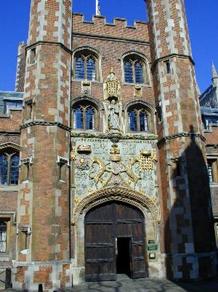

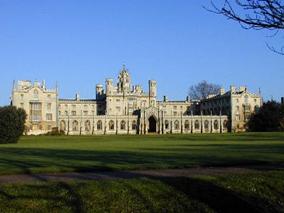
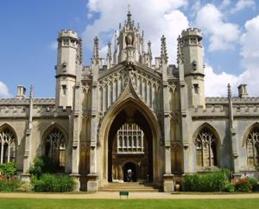
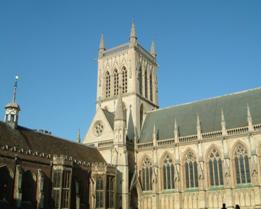


The Bridge of
Sighs is built crossing River Cam with more charming and allusive romanticism.
It resembles the Bridge of Sighs in Venice, which
acquired its name because it led to the prison. Some stories said that the
bridge was sealed to prevent some students who climbed the bridge into College
in mid-night after drinking in pub. Other stories said that new students who
passed through this bridge will surely get the degree after three year study.
Therefore, I also wlaked through this bridge, not once, but four times!
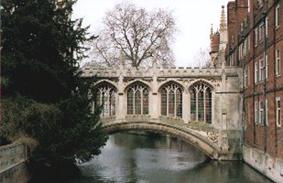
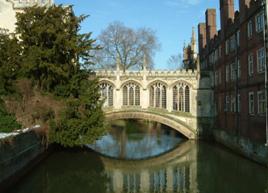
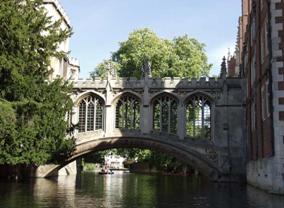
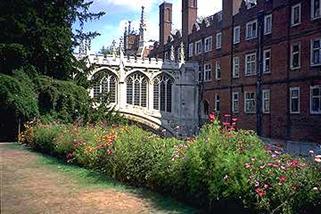
叹息桥
No.4. Queen’s
college (1448) 皇后學院
Queens’ College was first founded in 1448 by Margaret of
Anjou and then again in 1465 by Elizabeth Woodville. Queens' College is
fiercely proud of its royal patronesses. The main College site sits astride the
River Cam, the two halves joined across the river by the famous Mathematical
Bridge, The Wooden Bridge. This watery division can give visitors the
impression of stepping across the bridge from the twentieth century to the
fifteenth (or vice versa).
皇后學院座落在國王學院下方,它是由兩位皇后建立的。愛德華四世的妻子伊麗莎白伍德維爾和亨利六世的妻子瑪格麗特安珠,在十五世紀中葉先后重建這所學院。世界各地的游客來到這里, 一定不愿錯過去看看學院里跨越劍河,邊連接新舊兩邊的數學橋。数学桥,又称牛顿桥。相传牛顿采用数学和力学的方法设计并建造了这座桥,桥上没有用一颗钉子。牛顿的学生认为:牛顿老师能做到的事,牛顿的学生也能够做到。他们把这座桥拆了,可是怎么也不能把这座桥不用钉子恢复成牛顿老师建筑的原样,最后不得不用钉子才重新将木桥架好。实际上,这座桥是英国桥梁设计大师威廉·埃期里奇在女王学院就读时的作品,而负责建造的是詹姆斯·埃塞克斯,因为它的桥身相邻桁架之间构成构成11。25 度的夹角,在18世纪时,这种设计被称为几何结构,所以它被称为数学桥。今日數學橋上的釘子,似乎提醒人們發現地心引力的天才牛頓,并不是代代都出現的人物。

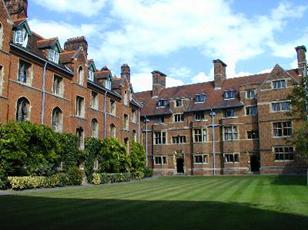
The bridge was built in 1749 by James Essex the Younger
(1722-1784) to the design of William Etheridge (1709-1776). It has subsequently
been rebuilt to the same design in 1866 and 1905. There is a baseless stories
told by unscrupulous guides to gullible tourists that Isaac Newton design and
built this bridge based on his mathematical model, without using any pins or
nails. Newton’s students did not believe that, and disassembled the bridge, but
failed to re-assemble it. Therefore, now all the joints of the present bridge
are fastened by nuts and bolts. Remember, this is not true…since Newton died in
1727, while the bridge was built in 1749.
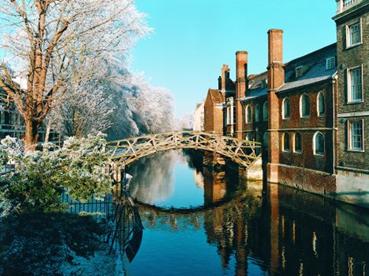
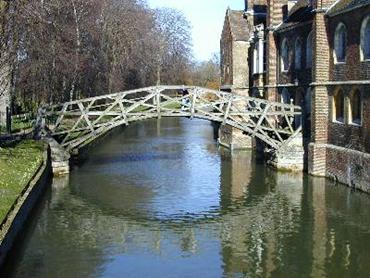
Mathematical
Bridge 數學橋
Peterhouse (1284)
Peterhouse is the oldest college in
Cambridge. It was founded in 1284. It stands near Little St. Mary's Church,
whose original dedication to St. Peter, thus gave the college its name.
Jesus
College
The college was founded in 1496 upon the remains of a
nunnery dedicated to St. Mary and St Radegund. The chapel is the highlight of a
visit to Jesus College.

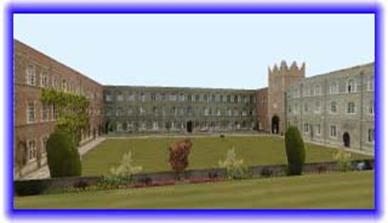
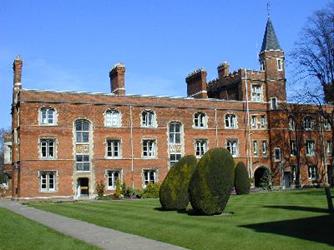

Clare
College (1326)
Clare College is the second oldest among Cambridge Colleges. The College was founded in 1326 and was the first of the Oxford and Cambridge foundations to provide for a Master, Fellows and Scholars in a single community. Clare College has the most beautiful garden in all these colleges. The Clare College Bridge is quite famous since there is a stonework left unfinished by the disgruntled, underpaid architect.
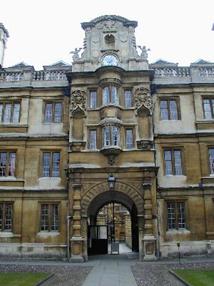
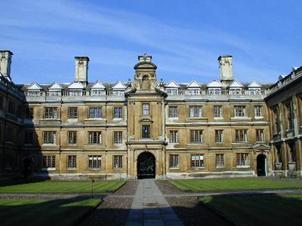

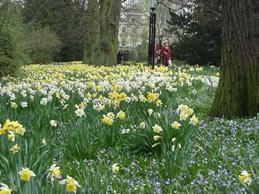
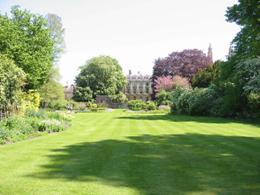
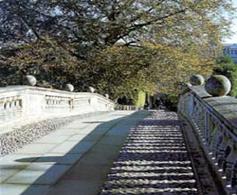
Christ
College (1437)
Christ's College was originally established in 1437 by
William Byngham. In 1448 the college moved to its present location after Henry
VI decided that he needed the original site for his new King's College. The
college is entered through an imposing 16th century Gatehouse, still boasting
its original oak doors. Above the entry is a statue and coat of arms of Lady
Beaufort. Like several other Cambridge Colleges, Christs' has its resident
ghost; an elderly man dressed all in black is occasionally seen walking in the
Fellow's Garden.

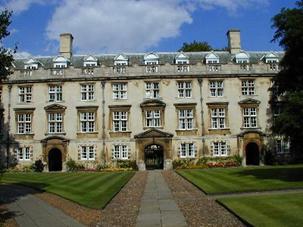
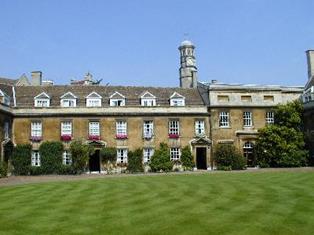
Charles
Darwin (1809-1882)
|
|
British naturalist, most famous as the father of evolutionary biology and originator of the theory of natural selection. As naturalist for 6 years aboard the ship HMS Beagle, during its voyage around South America, Darwin gained the experience that led to his epoch-making book On the Origin of Species (1859). This was followed by The Descent of Man (1871) which argued for the evolution of modern humans from apes - a revolutionary theory for its time. Darwin is buried in Westminster Abbey. Darwin was admitted to Christ’s College on 15th October 1827, gaining his BA in 1832, his MA in 1837 and an honorary doctorate in 1878. |
Gonville
and Cauis College (1348)
The college was founded in 1348 as Gonville Hall. In 1558 it
was refounded as Gonville and Caius College by John Caius, personal physician
to Edward VI, Queen Mary and Queen Elizabeth I. The old college lies close to
Great St.May's Church, and is entered through a 16th century portal known as
the Gate of Humility. It seems that Dr. Caius was a man much given to
symbolism, and he established his new college around three gates, named for the
qualities of Humility, Virtue, and Honour. He wanted it said that students at
Caius "would enter in humility, live in virtue and pass out to take
degrees in honour".
The college chapel was built around 1390. A story goes that the college ran out of money to pay for construction and was forced to pawn valuable books to raise the necessary cash. The panelled roof is impressive, but look for the tombs of Dr. Caius and other benefactors; they are set in the walls, moved there from the floor to make space!
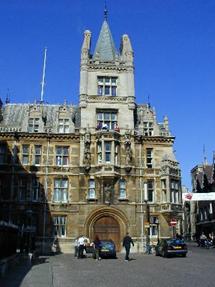
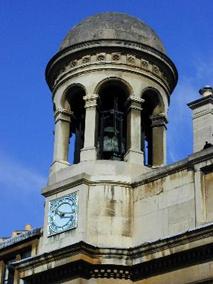
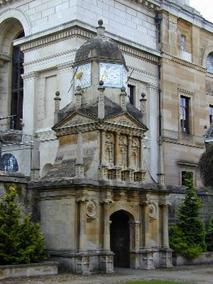

Emmanuel College (1584)
Emmanuel College was founded in 1584, but the most striking
and attractive building is the college chapel, built in 1677 by Sir Christopher
Wren. In chapel, there is a memorial to John Harvard, a former student who went
on to found Harvard University in Cambridge Massachusetts, USA. About EmmanuelEmmanuel is in the heart of Cambridge, in
a main shopping area, yet is off the tourist track and never feels crowded or
pressured. It is one of the larger colleges in Cambridge.
Prebroke
College (1347)
Pemboke is the 3rd oldest among Cambridge colleges. It was founded in 1347 (on Christmas Eve to be exact) by Marie de St. Pol, Countess of Pembroke. The college is composed of courts linked by attractive gardens and lawns. Several Pembroke men were burned at the stake under Queen mary, including Bishop Ridley. A path on the north side of the Bowling Green is known as Ridley's Walk in memory of the Protestant martyr.
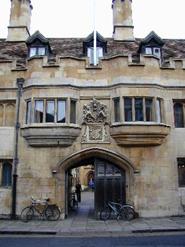
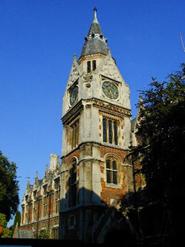
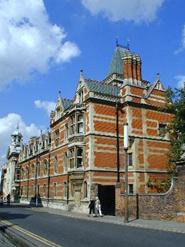
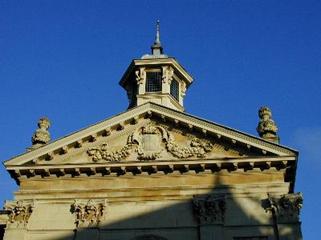
Trinity Hall (1350)
Trinity Hall is one smaller Cambridge Colleges. Trinity Hall
(Not Trinity College) is a delightful and largely overlooked gem among
Cambridge colleges. It was founded in 1350 by Bishop Bateman of Norwich.
Perhaps the most attractive feature of Trinity Hall is the intimate Fellows
Garden. Nestled among Clare, Gonville and Caius and Trinity Colleges, it lies
discreetly along the river Cam in the centre of Cambridge insulated against the
bustle of the town. While relatively small, intimate and notoriously friendly,
Trinity Hall still manages to maintain a diversity of membership which is one of
its strengths.
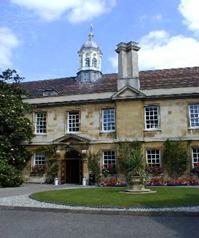
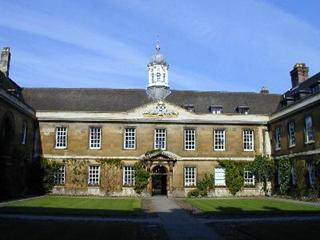
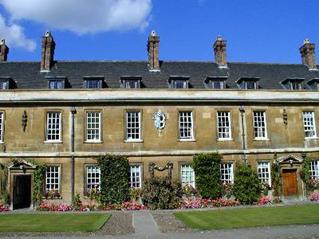
St Catharine College (1473)
St. Catherine's was founded as St. Catherine's Hall in 1473
by Robert Wodelarke, Provost of King's College. It originally served as little
more than a personal chantry chepel, with the Fellows obliged to celebrate
masses and pray for the founder's soul regularly.

Sydney
Sussex College (1594)
Sidney
Sussex College was founded in 1594 by Frances Sidney, Countess of Sussex.
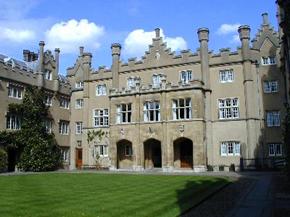
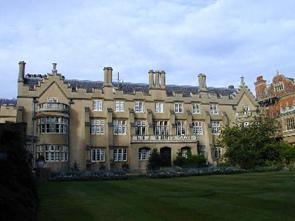
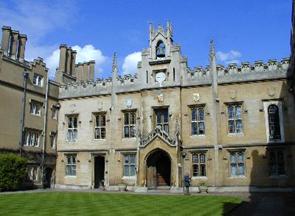
Corpus Christi College (1352)
Founded in 1352 by the
Guilds of Corpus Christi and the Blessed Virgin Mary, Corpus Christi is one of the smallest
Cambridge colleges. It bears the
distinction of being the only College in Oxford or Cambridge founded by their
citizens.
It is said that the wine cellars
under the Hall extend beneath the entire University. The college has a resident
ghost, usually appears in the Parker Room on M staircase in Old Court.
According to various versions of the story the ghost is either a student
accidentally asphixiated by his girlfriends, or a former Master who hung
himself in the early 17th century.
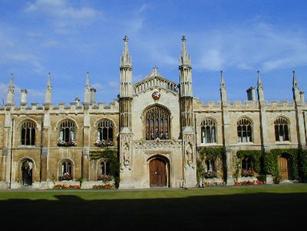
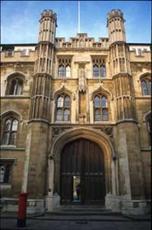
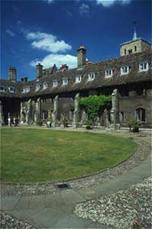
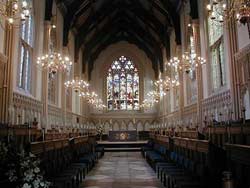
Downing College (1717)
Downing College was
founded by Sir George Downing 300 years ago.


Griton College (1869)
Established in 1869 as the first
residential College for women, Girton occupies spacious grounds about two and a
half miles northwest of the centre of Cambridge next to the village of Girton.
It became mixed in 1977 with the arrival of the first male Fellows and male
undergraduates have been admitted since 1979. The equal balance between the
numbers of men and women amongst both the Fellowship and the students is
matched by no other College. It has thus built on our long tradition of women's
academic success and achievement to become a diverse and friendly mixed
community in which our students can study in a genuinely egalitarian
environment.
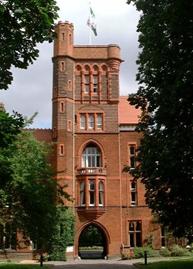


Darwin College
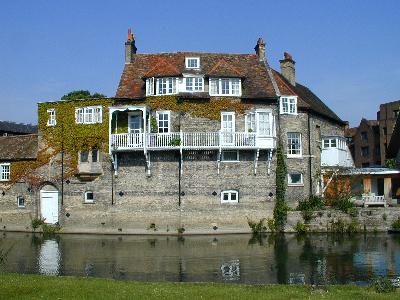
Magdalene College (1428)
The College of St Mary
Magdalene is located in the centre of Cambridge beside the bridge on the River
Cam, from which the city takes its name. The College has its origins in the
year 1428 when King Henry VI approved the establishment of a hostel on the site
for Benedictine monks coming from their abbey monasteries in the Fenland to
study Canon Law at the University.

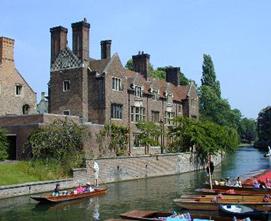
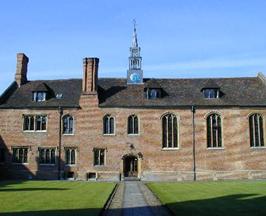
Newham College (1871)
Newnham College was founded in 1871 to promote academic
excellence for women.
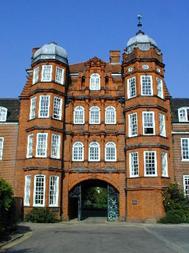
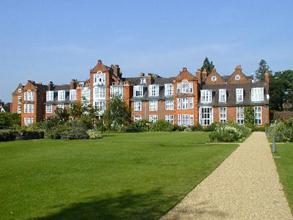

Selwyn College (1880)
One of the smallest colleges. Selwyn College takes its name
from George Augustus Selwyn, who was the first Bishop of New
Zealand (1841-68) and later Bishop of Lichfield (1868-78). The College itself
expanded in the late 1960s with the building of Cripps Court; it was also one
of the first colleges to become mixed, admitting women in 1976.
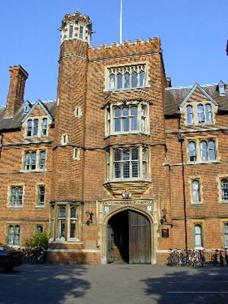
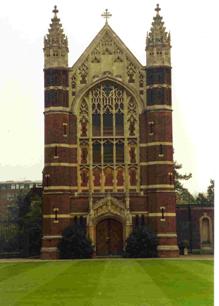
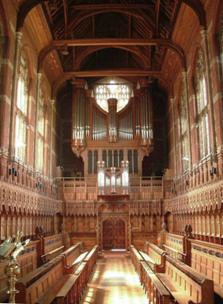
Churchill College
Churchill College is the national and Commonwealth memorial
to Sir Winston Spencer Churchill (1874-1965), best known for his courageous
leadership as British Prime Minister during World War II. He was a formidable
political thinker, soldier, historian, bricklayer, painter and orator, and he
won the Nobel Prize for literature in 1953. Churchill College is one of the 31
colleges of the University of Cambridge, and is set in grounds of some 40 acres
on one of the largest sites of any Cambridge college, located a short distance
from the increasingly congested city centre. Its open layout, with playing
fields extending beyond the courts and lawns of the College, is modern and
spacious. As the first major work of modern architecture in the University, it
has been judged "an outstanding conception", "the best of the
new" by one noted architectural critic. Modern though the design is, it
remains faithful to the traditional collegiate idea with interlinked courts and
staircases on which students' and Fellows' rooms intermingle. Many people who
visit us enjoy the quiet spaciousness of Churchill.
Homerton College (1695)
Homerton is centuries old, beginning as a dissenting academy
in 1695 in London. By the middle of the nineteenth century it had already begun
to specialise in training teachers, and in 1894 moved to its present site in
Cambridge. In 2001 Homerton took a further decisive step towards full
integration with the University of Cambridge as a constituent college.
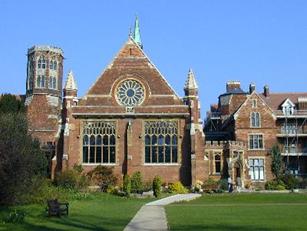
Webminster
College
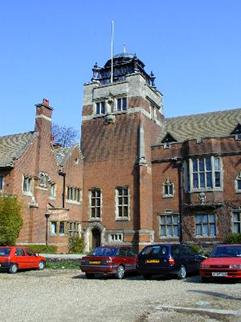
Wolfson College (1965)
Wolfson is the most cosmopolitan college in Cambridge and
among the liveliest and most agreeable. It was founded in 1965 by the
University in order to provide more places for graduate students and more
fellowships for the growing number of university lecturers and research
workers.
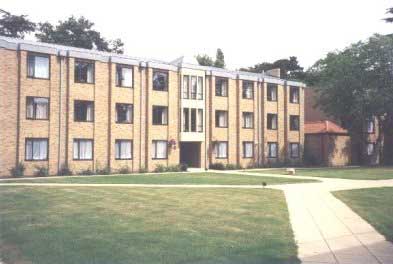
Robinson College (1977)
The new and latest college was found by Robinson, Sir David
(1904-1987). The building was started in 1977 and was virtually completed by
October 1980. Robinson College was formally opened by the Queen on 29 May,
1981.


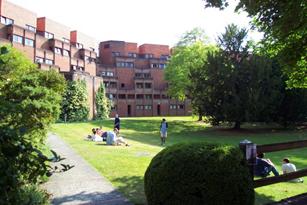



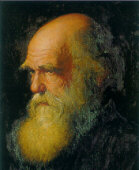
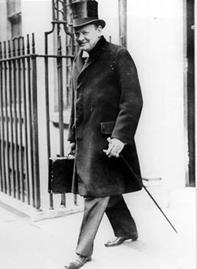
![[ Sir Winston Churchill ]](Cambridge%20college-photos_files/image179.jpg)

